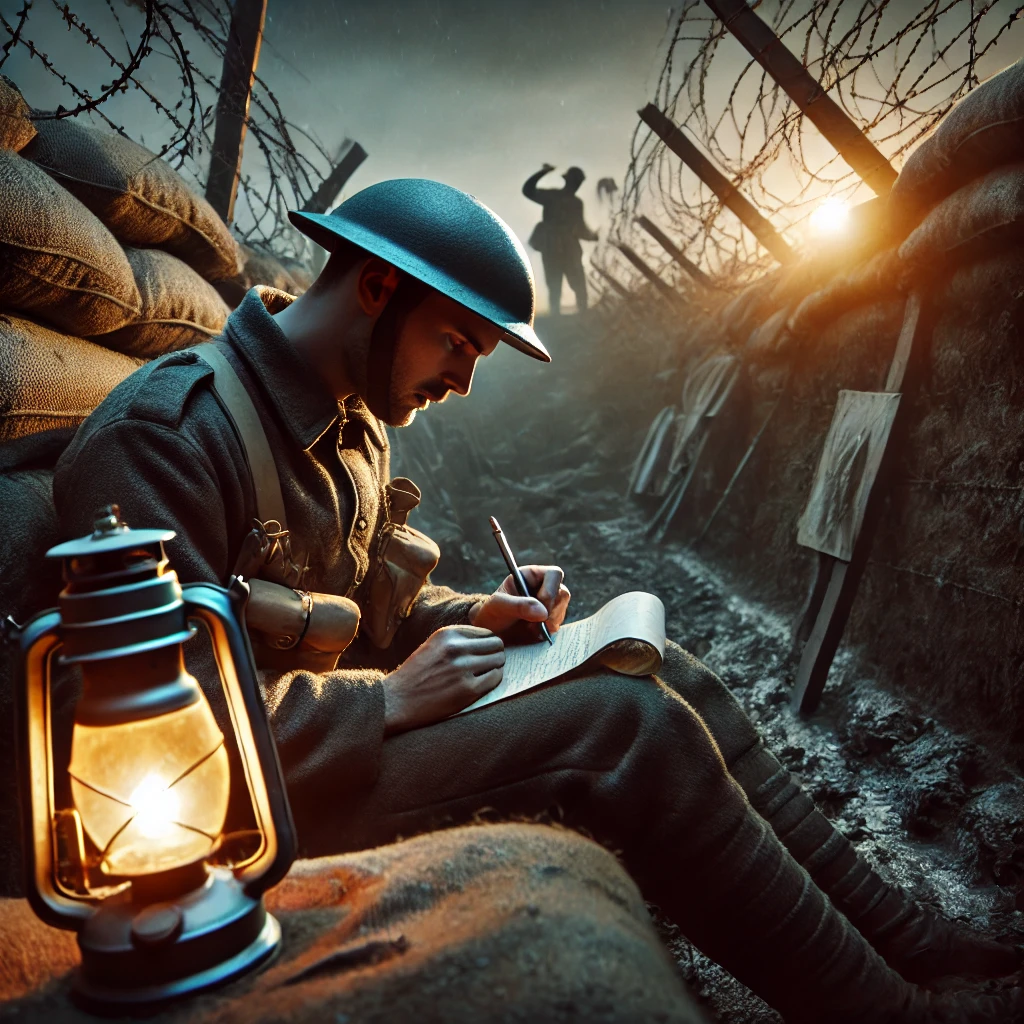Using Student-Written Letters as Authentic Assessments
History can often feel like a collection of names, dates, and battles—detached from the real human experiences that shaped the past. But what if students didn’t just learn about history? What if they lived it—stepping into the shoes of the people who experienced it firsthand?
One of the most powerful ways to achieve this is by having students write letters as historical figures. Instead of simply recalling facts, they actively engage with history, thinking about the emotions, struggles, and personal narratives behind major events.
A particularly compelling example is having students write letters home as soldiers in World War I. This assignment goes beyond memorization, forcing students to imagine life in the trenches, the psychological toll of war, and the contrast between propaganda and reality. It’s an assessment that doesn’t just test knowledge—it brings history to life.
Why Use Letters in History Assessments?
Traditional history assessments—essays, quizzes, and tests—are valuable, but they don’t always tap into students’ creativity or emotional connection to the past. Writing a letter from the perspective of a historical figure shifts the focus from simple recall to deep analysis and personal expression.
Letters as a Historical Tool
Letters have long been one of the most important sources for understanding history. They capture personal thoughts, unfiltered emotions, and the lived experiences of people in the past. When students take on the role of a historical figure through letter-writing, they:
- Engage in Perspective-Taking – They have to think like someone from the past, considering their fears, hopes, and motivations.
- Apply Historical Knowledge in Context – Instead of memorizing facts, they use them organically in their writing.
- Develop Empathy and Emotional Intelligence – They connect with historical figures on a human level, making history more than just an academic subject.
The World War I Letter-Writing Assignment
To see the power of this technique in action, let’s take a look at a letter-writing activity set in World War I.
The Assignment
Students are tasked with writing a letter as a soldier fighting in the trenches. They can choose a specific battle or location—perhaps the Battle of the Somme or Verdun—and must incorporate historically accurate details into their writing.
Their letter should address key historical themes, including:
- The horrors of trench warfare—mud, rats, lice, poison gas, and constant artillery fire.
- Censorship and propaganda—What would they avoid saying? How much truth would they tell their loved ones back home?
- The emotional toll of war—fear, boredom, camaraderie, longing for home, and the mental strain of battle.
- The role of technology—How do they feel about tanks, machine guns, or gas attacks changing the nature of war?
Student Perspective: Writing with Emotion and Accuracy
A strong letter isn’t just a collection of historical facts—it’s a personal reflection. A student might write:
“Dearest Mother,
The rain hasn’t stopped for three days now, and the trench is a thick soup of mud and misery. My boots are soaked through, and every step feels like sinking into quicksand. Rats—big as cats, I swear—scurry over our feet at night, hunting for scraps. We joke about keeping one as a pet, but in truth, we fear the diseases they bring.
They sent us over the top yesterday. It was chaos. I ran forward, my rifle shaking in my hands, but I could barely see through the smoke. The machine guns never stopped. I don’t know how I made it back. Many didn’t.
Don’t worry about me, though. The newspapers say we’re winning. Perhaps it will be over soon.
With love, your son,
James“
Notice how this blends personal experience with historical accuracy? The student demonstrates knowledge of trench conditions, military tactics, and censorship, all while making the reader feel the weight of war.
The Learning Benefits of Letter-Writing
So, why does this approach work so well as an assessment tool?
1. It Enhances Engagement
Students often find history more engaging when they can interact with it on a personal level. Instead of passively absorbing information, they become active participants, making historical learning more meaningful.
2. It Develops Critical Thinking and Historical Analysis
To write an authentic letter, students must evaluate sources, distinguish between propaganda and reality, and determine what details are historically plausible. This is a much deeper level of thinking than simply recalling information for a test.
3. It Encourages Historical Empathy
One of the biggest challenges in teaching history is helping students see historical figures as real people with emotions, fears, and ambitions. By writing as someone from the past, students develop empathy and a stronger connection to historical events.
4. It Reinforces Writing and Communication Skills
History isn’t just about knowing facts—it’s about communicating ideas effectively. Letter-writing assignments teach students to structure their thoughts, use descriptive language, and write persuasively—all skills that are valuable far beyond the history classroom.
5. It Allows for Differentiation and Creativity
Not all students excel at traditional tests. Letter-writing provides an alternative form of assessment that allows creativity while still demonstrating content mastery. Some students may focus on rich, descriptive storytelling, while others may dive deep into historical details.
How to Implement This in the Classroom
If you want to try this approach, here’s a step-by-step guide to making it work:
1. Set the Historical Context
Before writing, students should explore real letters from World War I soldiers. Websites like the Imperial War Museum or Library of Congress have excellent archives. Discuss themes, language, and historical details to help students understand how soldiers communicated.
2. Provide Structure
Give students a guiding prompt, such as:
“Write a letter home as a soldier in the trenches of World War I. Describe your experiences, your hopes and fears, and what you choose to share (or hide) with your loved ones.”
3. Encourage Historical Accuracy
Require students to include real historical details—mentioning a specific battle, describing their uniform, or discussing trench conditions. A rubric can include categories for historical accuracy, creativity, emotional depth, and writing mechanics.
4. Incorporate Peer Review and Discussion
After writing, have students share their letters in small groups. Discuss differences in perspectives—some soldiers might express patriotism, while others might show disillusionment. This adds nuance to their understanding of history.
5. Reflect on the Experience
After the assignment, ask students to reflect: What did they learn about World War I that they wouldn’t have learned from a textbook? How did stepping into the shoes of a soldier change their perspective on war?
Conclusion: Making History Personal and Powerful
By incorporating letter-writing into history assessments, we transform the way students engage with the past. Writing as a World War I soldier isn’t just a fun activity—it’s a deep, meaningful way to explore history, build empathy, and develop critical thinking.
History isn’t just a list of events—it’s the story of real people who lived, struggled, and dreamed. Giving students the chance to tell those stories through letters brings history to life in a way that no multiple-choice test ever could.
So, the next time you’re looking for a fresh way to assess student learning, consider the power of a letter. You might just find that your students connect with history in a way they never have before.




